标签:bubuko cout 代码 图片 for turn class end ems
具体问题的描绘和分析如下
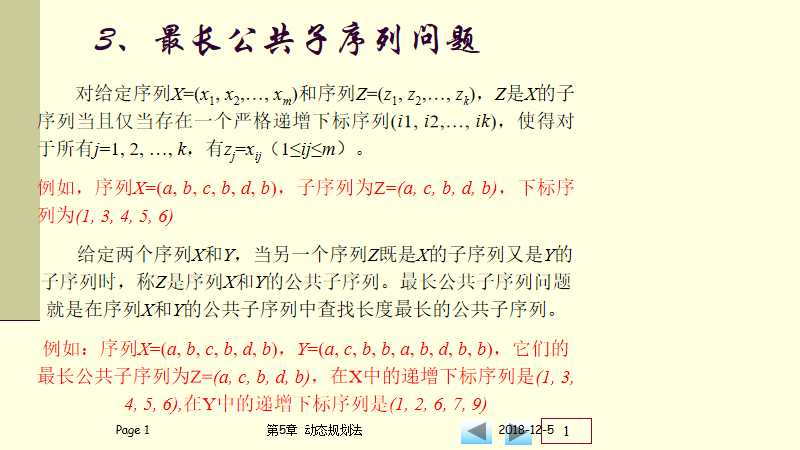
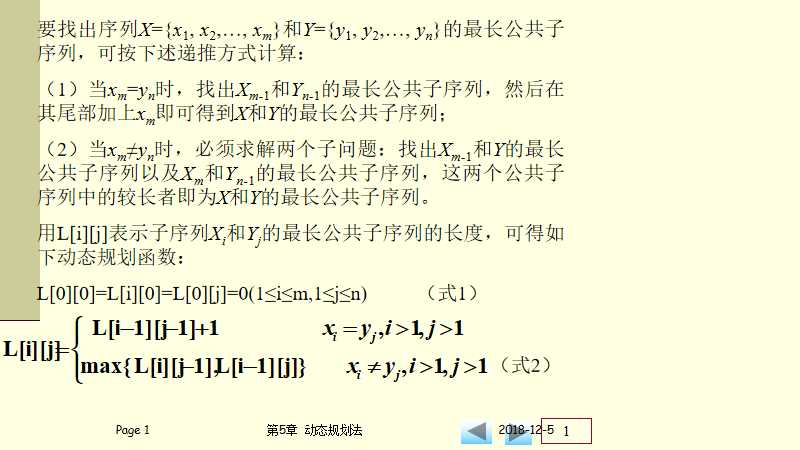
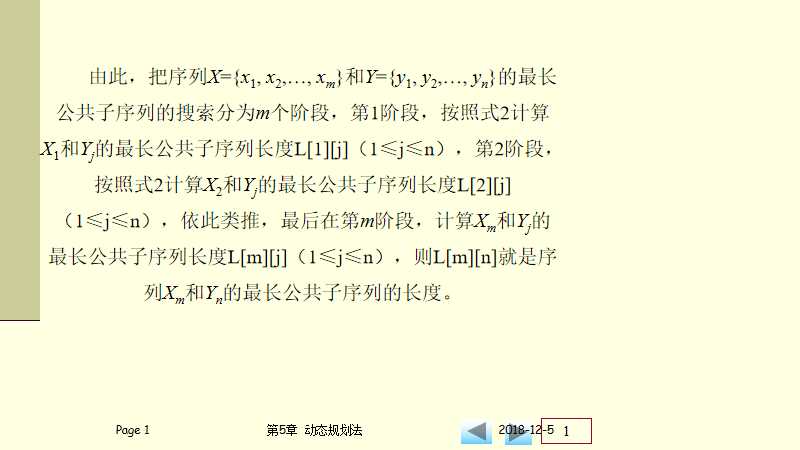
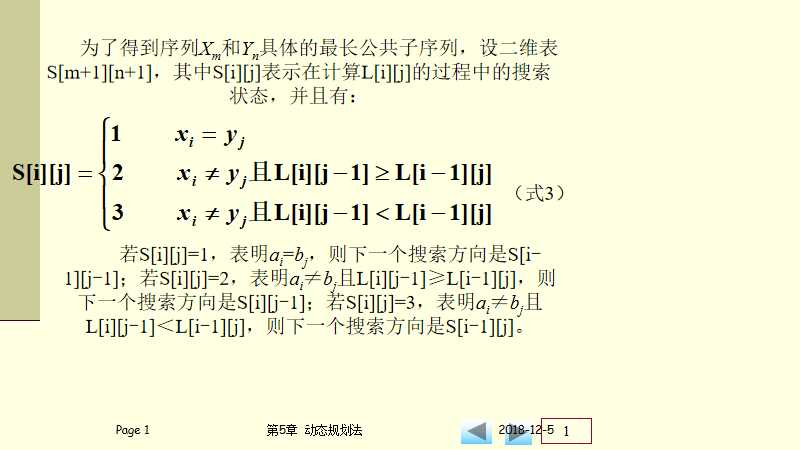
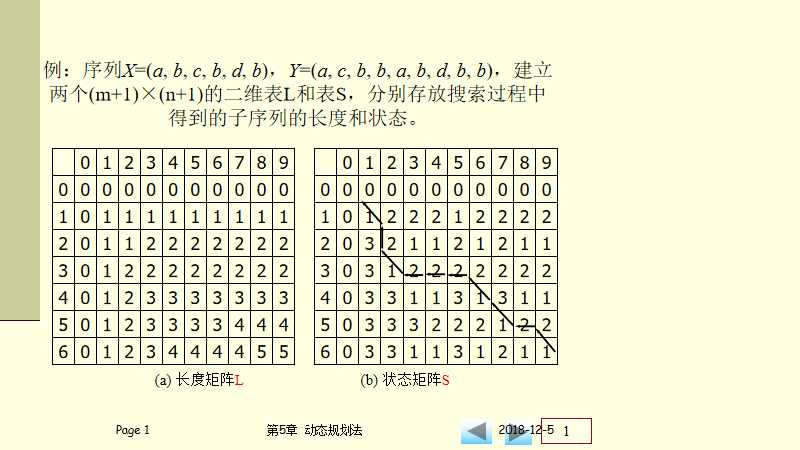
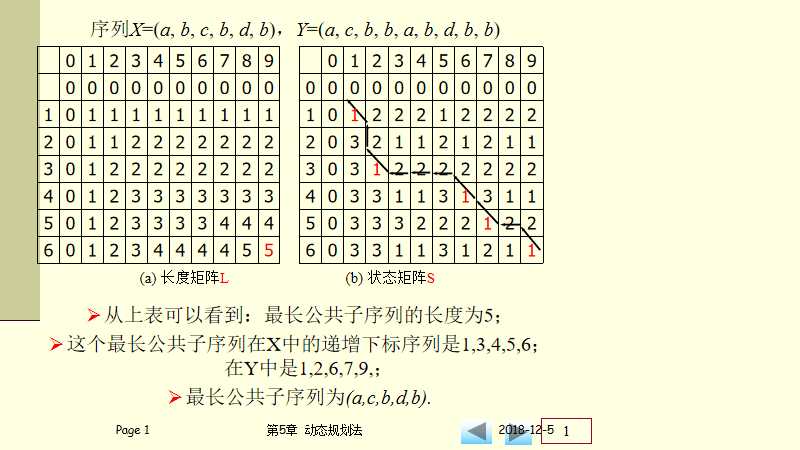
从上图可知,要构造两个二维数组,数组L用来求各种取值的子最长公共子序列,则最后一个元素就是最长公共子序列的长度,从右边的二维表,数值为1,则就是公共的元素,我们用数组记录下来,
代码如下:
1 #include<bits/stdc++.h> 2 using namespace std; 3 int Maxson(int m,int n,char array[],char array1[],int L[][100],int s[][100],char z[]) 4 { 5 6 for(int i=0;i<=m;i++){// //初始化第0行 7 8 L[i][0]=0; 9 } 10 for(int j=0;j<=n;j++){// //初始化第0列 11 L[0][j]=0; 12 } 13 for(int i=1;i<=m;i++){ 14 for(int j=1;j<=n;j++){ 15 if(array1[j]==array[i]){//式子(1)对应的代码 16 L[i][j]=L[i-1][j-1]+1; 17 s[i][j]=1; 18 }else{//式子(2)对应的代码 19 L[i][j]=max(L[i][j-1],L[i-1][j]); 20 if(L[i][j-1]>=L[i-1][j]){ 21 s[i][j]=2; 22 } 23 else{ 24 s[i][j]=3; 25 } 26 } 27 } 28 } 29 int i=m; 30 int j=n; 31 int k=L[m][n]; 32 while(i>0&&j>0){//从二维数组s里面得到公共子序列的元素 33 if(s[i][j]==1){ 34 z[k]=array[i]; k--; i--; j--; 35 } 36 else if (s[i][j]==2) j--; 37 else i--; 38 39 } 40 return L[m][n]; 41 } 42 int main() 43 { 44 int m; 45 cout << "请输入第一个序列的元素的个数" << endl; 46 cin >> m; 47 cout << "请输入第一个序列的每个元素" << endl; 48 char array[m+1]; 49 50 for(int i=1;i<=m;i++){ 51 cin >> array[i]; 52 } 53 int n; 54 cout << "请输入第二个序列的元素的个数" << endl; 55 cin >> n; 56 cout << "请输入第二个序列的每个元素" << endl; 57 char array1[n+1]; 58 for(int i=1;i<=n;i++){ 59 cin >> array1[i]; 60 } 61 int L[m+1][100]; 62 int s[m+1][100]; 63 memset(L,0,sizeof(L)); 64 memset(s,0,sizeof(s)); 65 char z[100]; 66 memset(z,0,sizeof(z)); 67 cout <<"公共子序列长度是" <<Maxson(m,n,array,array1,L,s,z)<< endl; 68 cout << " 公共子序列是"<< endl; 69 for(int i=1;i<=n;i++){ 70 cout << z[i]<< " "; 71 } 72 return 0; 73 }
运行结果如下:
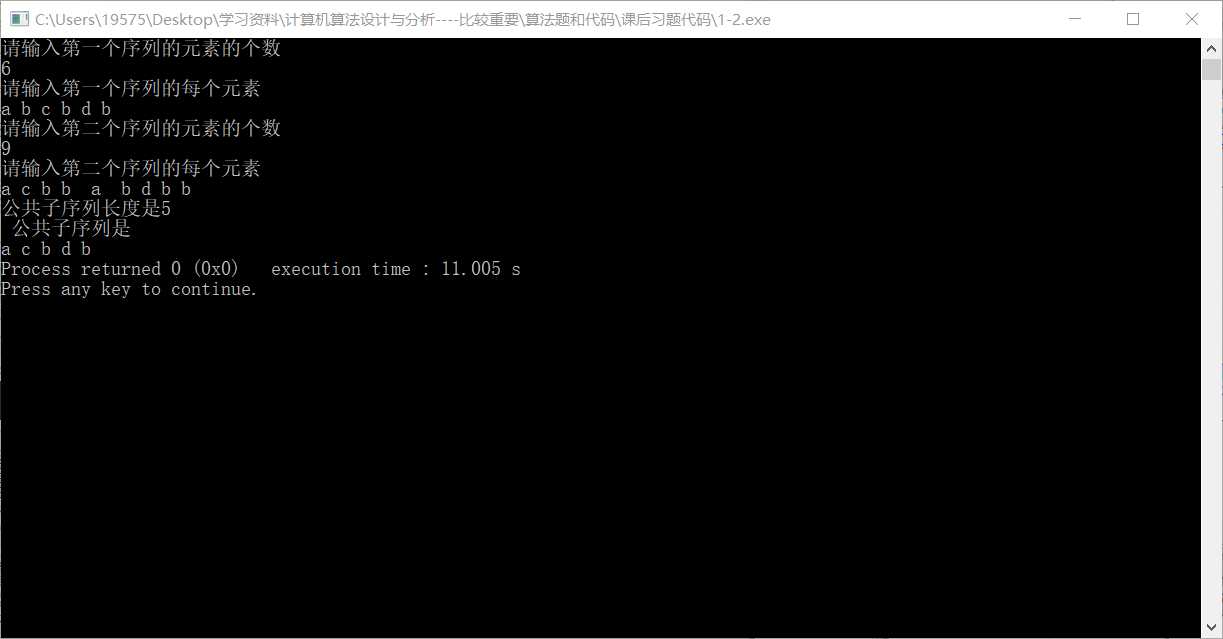
标签:bubuko cout 代码 图片 for turn class end ems
原文地址:https://www.cnblogs.com/henuliulei/p/10074366.html